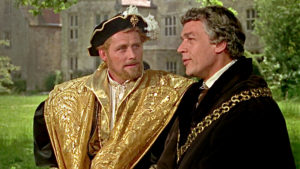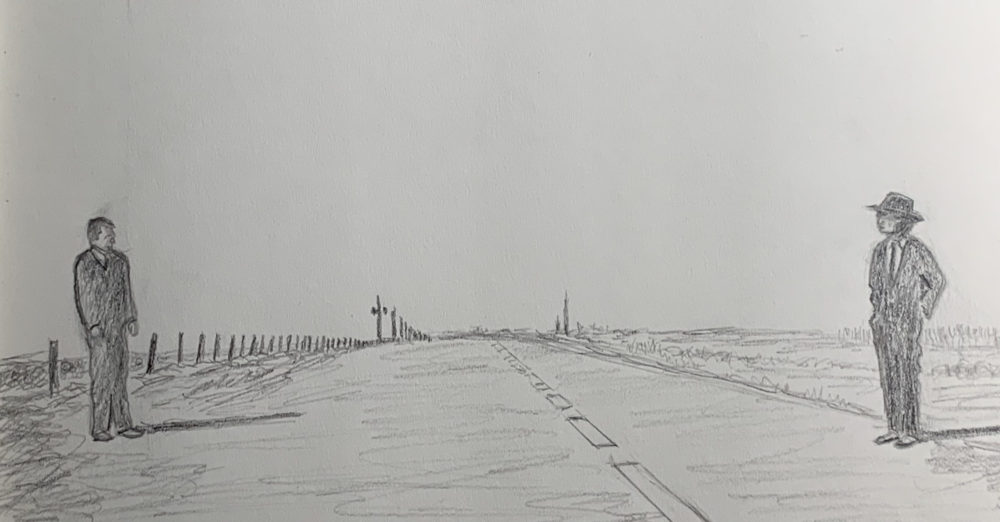
Robert Shaw, left, as Henry VIII and Paul Scofield as Sir Thomas More in A Man for All Seasons (1966)
It’s a bit silly, of course, to base historical observations on a movie, but I’m going to do it anyway. Playwright and screenwriter Robert Bolt was not alive in 1530s when Sir Thomas More mouldered in the Tower of London, obstinate in his refusal to sanction Henry VIII’s break with his first wife Catherine of Aragon and the Church of Rome. But his screenplay for the film A Man for All Seasons, while not historically accurate in all details, provides enough of the reality of the times to make the case that More (and probably his brilliant and learned daughter Margaret who kept many of her father’s writings alive) would have been largely copacetic with the ideals of the American Revolution 240 years later.
What’s striking about Bolt’s script, ably helmed by Hollywood regular Fred Zinnemann (who knew about dictatorship as an Austrian Jewish refugee from the Nazis who lost his parents in the Holocaust), is not so much Bolt’s erudite dialog, as good as it is, but the emotional reaction it provokes in the viewer that under the political system of monarchy, especially a powerful and paranoid killer like Henry VIII, you are only a whim away from losing your head.
There’s a scene in the film that brilliantly underscores this. We see a wedding party held for the Henry after he has broken with the Catholic Church, rid himself of Spanish Catherine and married Anne Boleyn. He’s immensely pleased with himself and needs only one thing to make the day perfect: the acquiescence of More to the situation. Henry, played as a volcanic egomaniac by a young Robert Shaw, thinks he spies More across the room during the revels. He’s excited by the prospect that More, Henry’s chancellor, has given in. So he pushes — he’s an asshole and a king so he really pushes — his way through the crowd to greet the man he thinks is More, loudly exclaiming “Thomas!” When the partygoer turns around we see that he is not More, however, the reaction of Henry is first surprise, then anger and finally a murderous gaze that heralds all that is to come for More. Shaw handles this beautifully, giving his initial reaction at the mistaken identity, then a short head turn away and then the final sulfurous look. You expect Henry to order the poor lookalike to be killed on the spot.
And that’s the true emotional kick of Bolt’s script, not the tearful reaction of More’s wife and daughter to his long imprisonment prior to his beheading. When your life hangs in the balance of a tyrant’s ever-shifting whims, you could be toast at any time. More attempts to buck this system by using the protections of law and due process. But a powerful autocrat can subvert those protections and get at you anyway, as Henry did with More. Regardless of the reasons that More won’t pledge allegiance to Henry’s marital whims, the point is that he shouldn’t have to just to keep his head.
This pushback against royal power is one of the reasons for the American Revolution. The reality of the rebellion is much more complex than that, of course. And the British themselves had already largely joined More in the realization of the need to reign in their kings and queens via both the English Civil War (1642-1651) and the 1688 Glorious Revolution — when Parliament required William and Mary to sign a document that restricted their power before allowing them to be crowned the new king and queen.
So while More would likely have been appalled in many ways by America in 1776, part of him may have been on board with the concept that a nation of laws is the way to go — not the tides of a monarch’s, or a dictator’s, fevered psyche.
